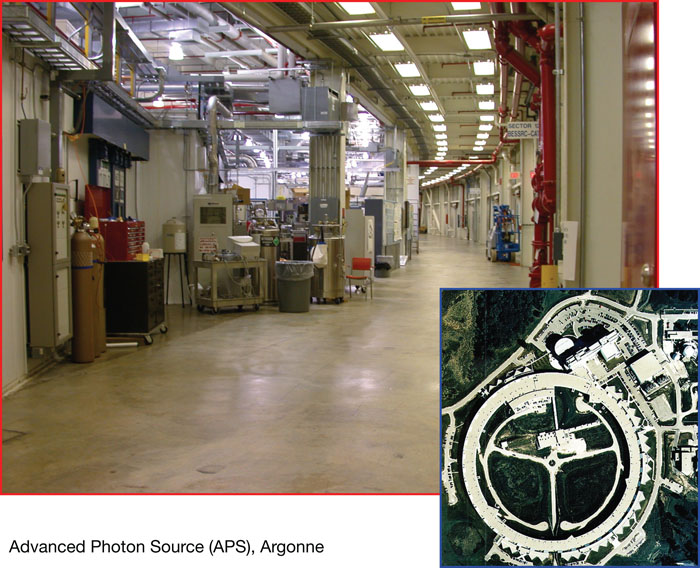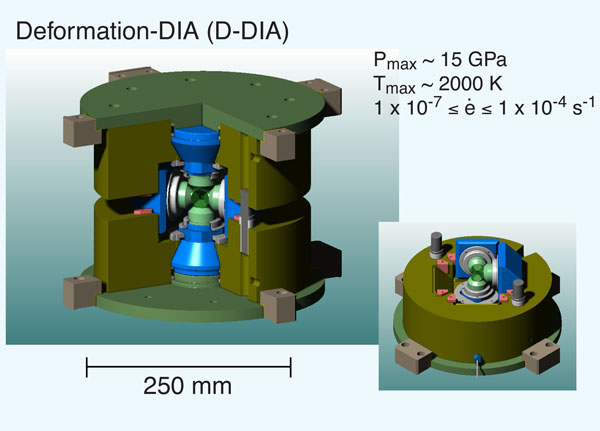

|
The D-DIA is a relatively new piece of hardware in the rock deformation toolbox. Conceived and built by a group of experimental geophysicists (Wang et al., 2003), it combines the technology of multi-anvil systems for reaching high pressures (>10 GPa) on relatively large samples of rock (~ 1 mm3), with the independent control of hydrostatic pressure and deviatoric stress of more conventional rock mechanics equipment. The result is a machine that allows testing of rock rheology well into the Transition Zone (depth >410 km) of Earth's mantle. The instrument could easily have been invented two decades earlier, but would have been pointless because of the impossibility of actually measuring the state of stress. What really allowed the D-DIA breakthrough was the development of synchrotron x rays. The synchrotron beam is extremely brilliant, capable of penetrating the solid gaskets of the D-DIA, and gives us a view of the internal structure of the samples themselves. Even the conventional rock mechanics machines don't ordinarily let us look at the sample while it is being deformed. |
|---|---|
The left-hand image in the figure is a cut-away view of the D-DIA. Six tungsten carbide anvils (light green, with the front most anvil removed for viewing purposes) define the cubic-shaped pressurized volume into which the solid pressure medium and the sample assembly are placed. In the smaller image to the right, the top guideblock and three of the anvils have been removed. A compressive axial force applied by a conventional hydraulic press (the "main ram") to the broad end platens (dark green) drives all 6 anvils centerward, compressing the inner volume. Independent hydraulic systems drive the differential rams (the blue conical shapes outboard of the top and bottom anvils) inward to further compress the sample, which is stacked in a vertical column between two hard pistons between the top and bottom anvils. By subtly relaxing the main ram as the differential rams advance, one can maintain a deviatoric load on the sample (thus making it creep) without changing the hydrostatic pressure. >>more photos>> |
|
